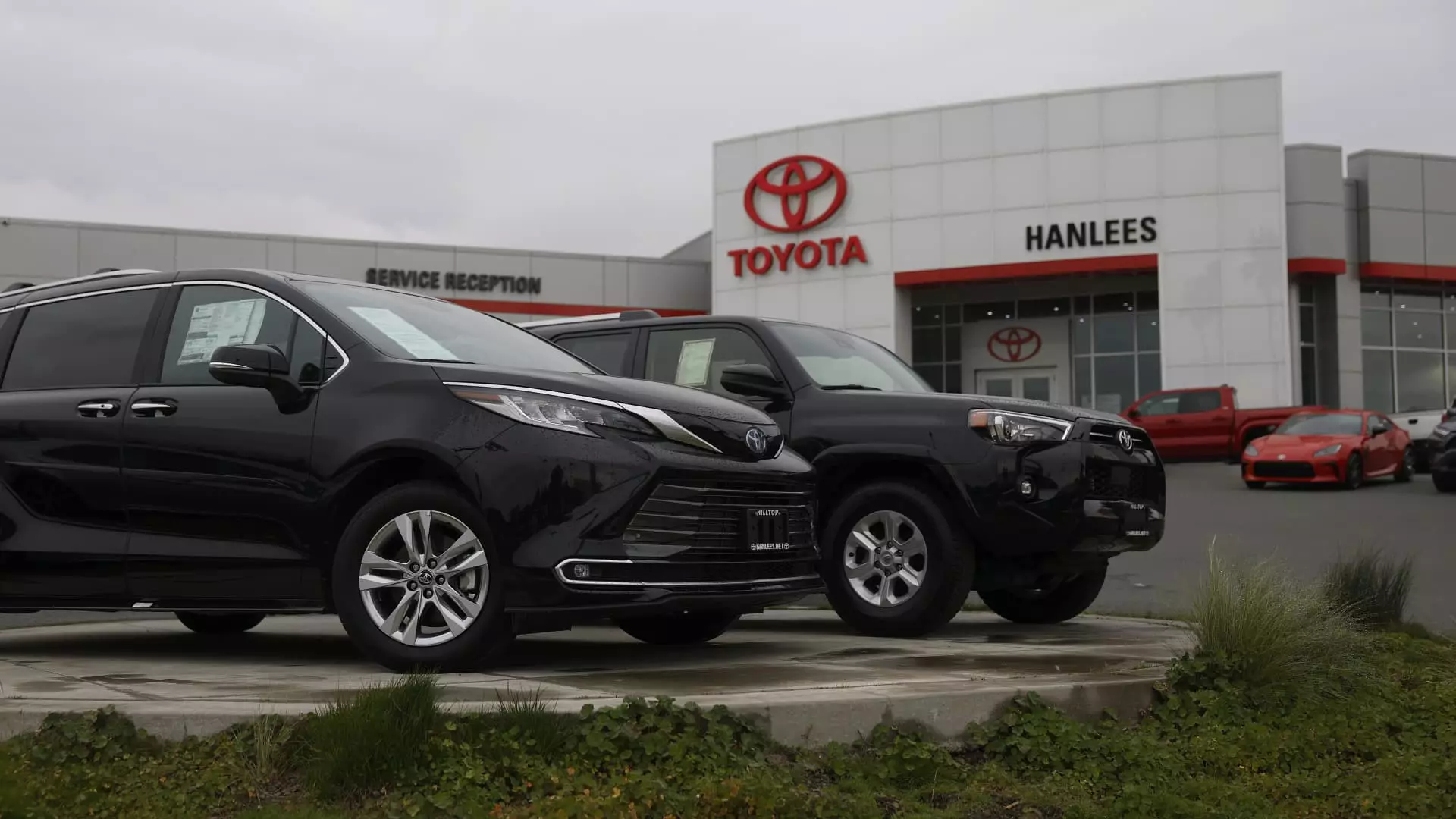The recent decision by the U.S. government to impose a staggering 25% tariff on automobile imports has ignited a firestorm of anxiety among Asian automakers, threatening to upend their fragile ecosystems. President Trump’s sweeping tariffs, aimed directly at vehicles “not made in the U.S.,” have sent stock prices tumbling, particularly for major players like Toyota and Nissan. This drastic measure not only rattles the foundations of the automotive industry but also raises urgent questions about the viability of international trade relations.
The Market Response
In the aftermath of the tariff announcement, Asian car manufacturers have faced a grim reality. Within just a few trading sessions, Toyota saw a staggering 9.4% drop in its stock value, while Nissan plummeted by 9.3% and Hyundai suffered an 11.2% decline. The sharp market retraction is indicative of an industry on the brink, grappling with its dependency on the American consumer. The statistics are telling: in 2024, Asian automakers accounted for six of the top eight spots in U.S. sales volumes, with Toyota commanding a market lead that is increasingly precarious in light of these tariffs.
These numbers highlight a stark truth: North America represents an irreplaceable market for these companies. The sheer volume of automotive goods imported into the U.S. is a staggering $474 billion, with passenger cars alone constituting a $220 billion slice of that pie. This reliance on the American market creates a precarious balancing act for automakers trying to navigate the turbulence of new trade policies.
The Complexity of Shifting Production
One of the most insurmountable challenges for Asian automakers is the logistical and financial strain associated with relocating production facilities. Industry experts like Joe McCabe assert that moving factories isn’t as simple as flipping a switch; it requires years of planning and substantial capital investment. This reality proves that the tariffs will not just clobber current pricing strategies; they impose a long-term burden that companies will struggle to mitigate.
While some manufacturers like Toyota and Nissan have established a foundation in U.S. production, even they cannot ramp up output to offset the impending financial losses from tariffs swiftly. Richard Kaye raises a compelling point regarding the unrealistic expectation that automakers can eliminate reliance on Mexican or, to some extent, Canadian supply chains. The ultimate outcome may leave automakers with two unfavorable choices: absorb the costs or pass them down to consumers, thereby inflating prices further in an already sensitive market.
The Silver Lining for Some
Interestingly, amidst this sea of red, one automaker stands out: Suzuki. Without a presence in the U.S. market, Suzuki appears unaffected by the tariff storm, maintaining a subtle yet resilient position as its share values climb. This situation reflects a significant opportunity for Suzuki to thrive while rival companies like Toyota and Nissan spiral downwards.
Kaye’s insights underline a curious reality; not all are ensnared by the web of tariffs, showcasing the complexities of global trade dynamics. For Suzuki, an export strategy that embraces alternative markets may demonstrate the importance of diversification in mitigating risk.
The implementation of these tariffs acts as a stern reminder of the stakes involved in international trade. As Asian automakers confront dwindling stock values and plummeting market confidence, stakeholders are increasingly forced to consider the long-run implications of these decisions. This turmoil is not just an isolated event; it reflects broader political and economic themes that underscore the volatility of trade relationships.
Moving forward, it’s crucial for policymakers to consider the ramifications not only for domestic manufacturers but also for the global supply chains that will invariably be impacted by these tariffs. The question remains whether this aggressive stance will yield protection for American jobs or merely stoke a cycle of retaliatory measures that could harm the very interests it seeks to protect.

